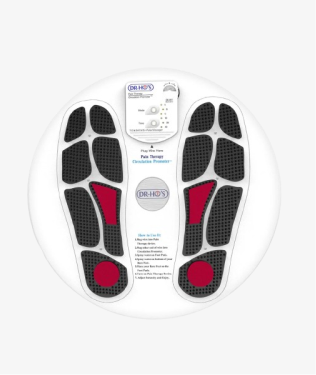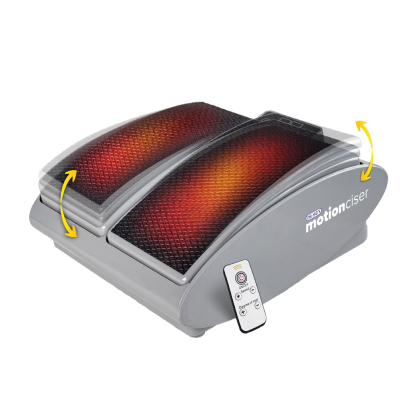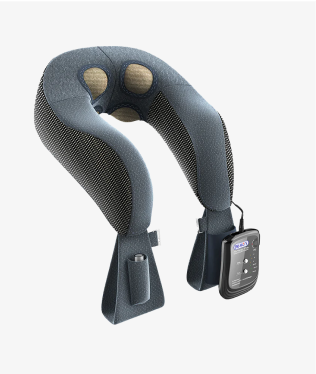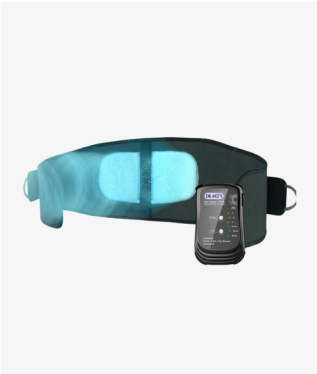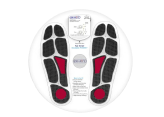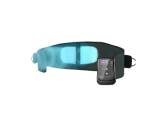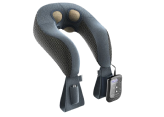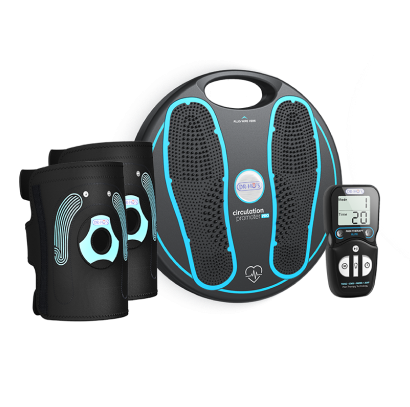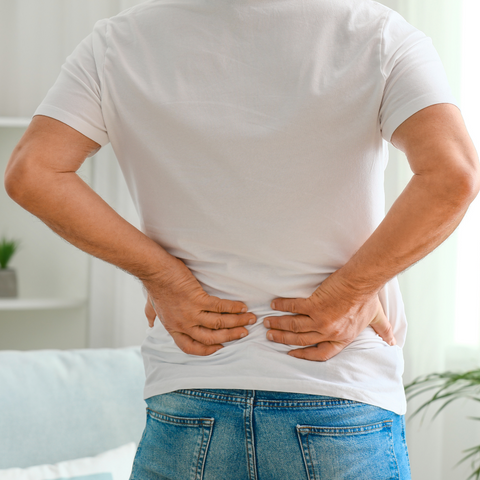“Fixing” your posture and having “good” posture is something we all know to be important and good for one’s health. But what is good posture, and why is it so important? We’re going to dig into the relationship between poor posture and back pain, and outline some meaningful ways to find relief from this pain.
Back pain is a common issue, and pain affects people's daily lives and overall health, often making everyday activities more difficult as they age.
Anyone — even those not dealing with back pain at the moment — can benefit from learning about what it really means to have good posture.
Introduction to Back Pain
Lower back pain is one of the most common health complaints, affecting millions of people and often interfering with daily life. This discomfort can range from mild stiffness to severe pain that limits movement and makes normal activities challenging. The lumbar spine, located in the lower back, is made up of spinal bones, joints, and muscles that work together to support your body and allow for flexibility and movement. When poor posture, muscle spasms, or injuries occur, they can put pressure on the spinal cord and surrounding nerves, leading to pain and discomfort. Understanding how the spine functions and what causes back pain is the first step toward finding effective treatment and relief, so you can get back to enjoying your everyday activities.
What is bad posture?
Postural dysfunction or “poor posture” is a term used to describe the spine being positioned in an unnatural way. This includes, but is not limited to, slouching. Slouching forward, or curving the spine inwards, exaggerates and extends the curve of the spine. Either way, it puts extra pressure on the surrounding tissues, including joints, muscles, nerves and more. The added pressure caused by poor posture damages tissues over time, and the pain caused by poor posture can lead to discomfort, physical conditions, and more unintended consequences.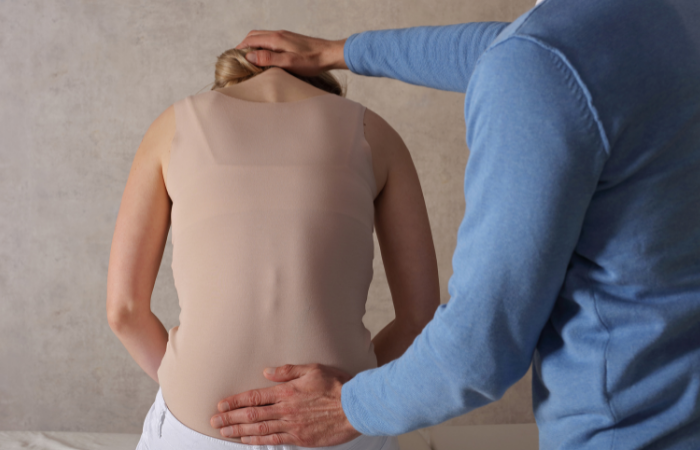
Why does slouching feel comfortable if it's bad?
If you've been habitually slouching, it can actually feel kind of awkward and painful to stand or sit ergonomically at first. While it may feel good and comfortable to slouch, this is just from conditioning over time — don't be fooled!
Poor posture can be related to other back pain conditions.
Improper posture in itself can cause pain and discomfort. It can also be an underlying cause of the following common conditions, and it may aggravate the pain associated with them:
-
Bulging or herniated spinal discs
-
Arthritis
-
Osteoporosis
-
Pinched spinal nerves
-
Injuries, fractures or strained muscles and ligaments

Back pain isn’t the only result of poor posture.
For some, habitual poor posture can have some unexpected effects elsewhere in the body, including:
Bladder incontinence: Habitual slouching puts pressure on the abdominal area, which then puts pressure on the bladder. It also makes it more difficult for the pelvic floor muscles to hold off against this pressure, leading to possible incontinence.
Heartburn: Slouching after eating or drinking can put pressure on the abdominal area and force stomach acid to come back up, causing heartburn.
Headaches: Bad posture can bring about neck and shoulder pain too, especially when habitually sticking the head outwards and down (this is often called “tech neck” or “text neck”). This can even bring about headaches. Learn more about tech neck here.
Your appearance: Poor posture can change your appearance depending on your habits. It can alter the appearance of your shoulders, making them appear rounder, or your abdomen, exaggerating the extension of your belly.

What is good posture?
Now that you understand the repercussions of poor posture, let’s talk about improving your posture. There isn’t a one-size-fits-all, gold standard for posture. All bodies are different and having a neutral spine position that doesn’t put extra pressure on the tissues in the back can look different for everyone. Remember to stay active, as regular movement and physical activity are important for maintaining good posture and preventing pain. Here are some general guidelines for having better posture and thus reducing the pain associated with poor posture:
Good Posture When Seated
Better posture while seated can be achieved in 5 simple steps:
Step 1: Situate your back against your chair; your seating should support the curvature of your spine, situated at a 90-degree angle.
Step 2: Place any screens or other materials at eye level. If this is not possible given the height of your desk, you may need a tool like a laptop raiser.
Step 3: Place your feet flat on the ground, without crossing your legs. In the correct position, your knees should be at the same level or slightly lower than your hips. This may require some chair adjustment.
Step 4: Ensure that you are able to use any materials on your desk with your wrists and forearms straight. Your keyboard, mouse or other materials should be kept as close to you as possible to prevent you from bending forward. This may also require further chair adjustments.
Step 5: Take breaks often to stand up, walk around, and get into the proper seating position again.

Good Posture When Standing
Do a full-body scan to make sure that you’re standing up ergonomically:
Head: In a neutral position, your earlobes should be in line with your shoulders.
Shoulders: Your shoulders should feel loose, and be situated down and back.
Back: From your profile, your back should appear to be at approximately a 90-degree angle without any exaggerated spinal curvature.
Legs: Stand with your knees bent slightly to maintain proper alignment.
Feet: Your feet should be shoulder-width apart and your weight should be primarily on the balls of your feet.
Explore natural, drug-free ways to find relief from pain related to poor posture.
You don’t have to simply accept your back pain as unavoidable or permanent. As you work towards correcting your posture habits, incorporate these three methods of pain relief to get even closer to living a life that’s free from back pain.
1. Massage Therapy for Back Pain
Find some much-needed relief and restorative relaxation with massage therapy. A massage from a registered massage therapist (RMT) can be particularly beneficial for back pain sufferers.
Depending on your pain needs and comfort level, your massage can be tailored with varying techniques and pressures to suit you. A massage therapist can target sore muscle fibres and surrounding connective tissues that can become sore from added pressure due to poor posture. Massage therapy can help reduce stiffness and improve circulation in the affected areas.

2. A TENS-enabled Support Belt for Back Pain
You may have heard of back braces or other supports that work to position your back straighter. The Triple Action Back Belt from DR-HO’S also uses pain therapy technologies to target pain, in addition to supporting the back in a more ergonomic position. Here’s how it works:
The Triple Action Back Belt is first and foremost a TENS- and EMS-enabled device that uses safe, gentle electrical stimulation to temporarily relieve chronic, intractable pain and soothe sore muscles.
TENS (Transcutaneous Electrical Nerve Stimulation) stimulates the nerves to help reduce pain signals sent to the brain and provide temporary relief of pain. Additionally, TENS therapy is thought to aid in the release of endorphins — a naturally occurring chemical that helps the body relieve and manage pain.

EMS (Electrical Muscle Stimulation) gently stimulates the muscles, causing them to contract and relax in order to increase local circulation and address muscle soreness.
Proprietary AMP Technology (Auto Modulating Pulse) from DR-HO’S is a stand-out feature that keeps the therapies effective over time, with constantly changing and unpredictable stimulation.
That’s not all that makes this device a meaningful option for back pain sufferers; the device also features a built-in Lumbar Support Cushion and Dual-Core Support Band. The belt can be inflated to your comfort to help you find lumber and core support whenever you need it. The support cushion works to help realign the user’s posture into a more ergonomic position, taking the weight off of discs and joints in the lumbar spine, and encouraging correct posture. It’s a device that can not only help you when pain strikes but it can also be worn to improve posture and increase support going forward.

3. Sleep Hygiene for Back Pain
Back pain sufferers can find that while it’s already difficult enough to fall asleep with back pain, sometimes your sleeping positions can make it even worse in the morning. To avoid this, firstly assess your mattress and ensure that you have the appropriate firmness for your comfort and for your spine; a medium-firm mattress works for most. Pain sufferers may be able to find some back pain relief with these sleep positions that add support and take pressure off of your back:
- Sleep with a pillow between or underneath your legs.
- For side sleepers, sleep with a pillow between your knees.
- For back sleepers, use a pillow between the knees or place a rolled-up towel in the small of your back.

The DR-HO’S Just Right Pillow with its customizable firmness and support is designed to keep the spine neutral for both back and side sleepers.
4. Home Remedies and Exercise for Lower Back Pain
There are several home remedies you can try to relieve lower back pain before seeking medical intervention. For a recent back injury, applying an ice pack immediately can help reduce inflammation and numb the area. After the first 48 hours, switching to a hot water bottle as heat therapy can relax muscles and increase blood flow, aiding recovery. Using a rolled towel under your lower back or knees during sleep or stretches can support alignment and relieve discomfort.
If you experience moderate pain, a combination of home remedies, an exercise program, and lifestyle changes may be needed to relieve pain and improve your quality of life. Specific stretches, such as pulling one knee to your chest and then switching to the other leg, can target the lower back, hip, and leg muscles. Stretches that focus on the hip, knee, and leg can help improve mobility and reduce pain.
Other exercises like yoga, Pilates, and tai chi are gentle options that can help relieve lower back pain and support overall back health. Developing a personalized exercise program that includes aerobic activity, strength training, and flexibility exercises is recommended to prevent injuries and support recovery.
Preventing Lower Back Pain: Everyday Habits That Help
Preventing lower back pain starts with adopting healthy habits in your daily life. Practicing good posture, especially when sitting or standing for long periods, helps reduce the risk of developing back pain. Take regular breaks to stretch and move around—this increases blood flow, reduces muscle tension, and keeps your back muscles flexible. Incorporate exercises that strengthen your core and back muscles, such as yoga, Pilates, or simple stretching routines, to help prevent injury and maintain a healthy weight. When lifting heavy items, always bend your knees and keep the object close to your body to avoid putting unnecessary strain on your spine. Wearing comfortable shoes and avoiding prolonged sitting can also make a big difference. By making these small changes, you can reduce your risk of lower back pain and keep your spine healthy for years to come.
Managing Chronic Back Pain: Long-Term Strategies
For those dealing with chronic back pain, a long-term management plan is essential for lasting pain relief and improved quality of life. Working with a healthcare provider or physical therapist can help you develop a personalized treatment plan that addresses your specific needs. This may include physical therapy to strengthen muscles and improve mobility, medications such as nonsteroidal anti-inflammatory drugs to reduce pain, or alternative treatments like acupuncture and massage. Lifestyle changes, such as maintaining a healthy weight, engaging in regular exercise, and practicing good posture, are also key to reducing pain and preventing future flare-ups. By combining these strategies and staying proactive about your back health, you can find relief from chronic pain and return to your normal activities with greater comfort and confidence.
Take action now to feel better, sooner!
We hope that our look at poor posture and back pain helps you understand the importance of proper posture, and find ways to not only correct your posture, but find some relief from the associated pain — so you can get back to doing the things you love!
Disclaimer: DR-HO'S content is intended for informational purposes only and should not be taken as medical advice. Please consult a certified medical professional for diagnosis and treatment recommendations.


